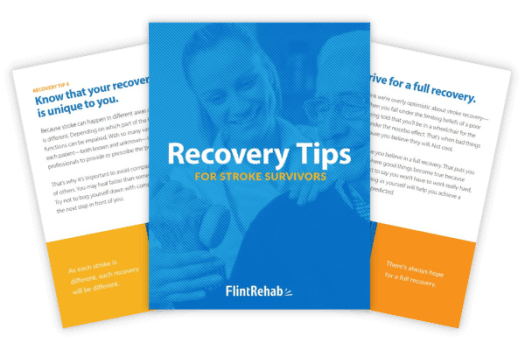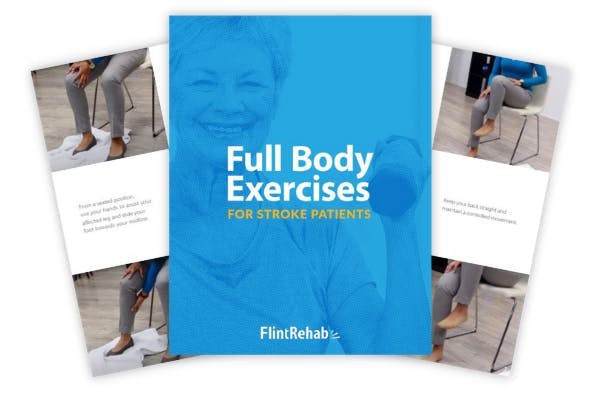No products in the cart.
No products in the cart.
No products in the cart.
No products in the cart.
Home » Neurological Recovery Blog » Stroke » Neuropathy After Stroke: Understanding & Treating Nerve Pain
Last updated on March 7, 2023

Stroke is a serious, life-changing injury that can result in a wide variety of secondary effects. Among these secondary effects is nerve pain, or neuropathy. This type of chronic pain condition can be frustrating for survivors, but fortunately there are ways to treat it.
Neuropathy after stroke can be tricky to diagnose and can present in a variety of ways. Before you consider treatment, it’s important to understand the different types of neuropathy after stroke and to discuss your treatment options with your healthcare team. To help you better understand nerve pain after stroke, this article will review the causes of neuropathy, different types, and treatment options.
Many people wonder if a stroke can cause neuropathy, and the answer is “it depends.” Also referred to as nerve pain, neuropathy can present in different forms. This means that the cause and symptoms an individual may experience depends on the type of neuropathy, such as peripheral or central.
Peripheral neuropathy, the first type of neuropathy, is a co-occurring condition that stems from localized nerve damage. This means this specific type of nerve pain was not caused by the stroke, but rather by damage to the nerves outside of the brain and spinal cord.
Peripheral neuropathy feels like pain or numbness in one area of the body and typically affects the hands and feet, although it can occur elsewhere. This condition is caused by damage to peripheral nerves and nerve endings rather than the brain. Examples of causes of peripheral neuropathy include a traumatic injury, diabetes, or an infection.
If you have central neuropathy, the second type of neuropathic pain, then the stroke may have caused it. That’s because this type of neuropathy stems from damage to the central nervous system, which includes the brain.
Central neuropathy often affects the same areas of the body as the stroke itself and can be debilitating for survivors. Since a stroke is also known as a “brain attack,” you can see how the two conditions may be linked. To help further explain the link between stroke and nerve pain, we will discuss the cause of central neuropathy in the next section.
Central neuropathy is caused by dysfunction of the central nervous system. This type of nerve pain is commonly referred to as central poststroke pain (CPSP) and affects around 1-8% of stroke survivors. Although research on CPSP has grown in recent years, evidence for the pathology and treatment of this type of nerve pain after stroke is still limited.
Central neuropathy is typically characterized by a burning sensation, pins-and-needles sensation, or intense stabbing or searing pain. In addition to these painful symptoms, central neuropathy can increase sensitivity to tactile stimulation. For example, a gentle breeze across the skin can feel like razor blades or intense burning. This type of pain is chronic and can still be present even if the survivor has diminished sensation in those areas of the body.
Central neuropathy occurs when the central nervous system (i.e. the brain or spinal cord) are injured from a serious event like stroke, traumatic brain injury, or spinal cord injury. In the case of a stroke, this nerve pain is the result of tissue damage within the brain.
It was formerly thought that central poststroke pain was solely due to injury to the thalamus, an area deep within the brain. However, we now know this condition can be the result of damage to many other areas of the brain as well.
Although pain is a common experience for stroke survivors, this symptom is often overlooked and not thoroughly managed. Central neuropathy after stroke can be difficult for your doctor to diagnose because it often develops months or even years after stroke. In fact, survivors of stroke can develop central neuropathy as late as 6 years following their initial injury.
In addition to symptoms that are often vague or difficult to localize, this delayed onset can lead to misdiagnosis. However, it’s critical to avoid misdiagnosis because treatment for localized pain does not work for central neuropathy.
Therefore, it’s a good idea to keep notes about your recovery from stroke all in one journal or folder and bring that with you to every doctor appointment. If you can provide a written record of your symptoms and stroke recovery timeline, it will help illustrate the problem for a more accurate diagnosis. Once you receive an appropriate diagnosis for your nerve pain after stroke, you can then begin targeted treatment.
Peripheral neuropathy and central neuropathy after stroke are both treated differently because they have different causes. To help you understand the differences, we will first discuss peripheral neuropathy treatment and then move on to central neuropathy treatment.
With peripheral neuropathy after stroke, pain is localized in one area of the body and is caused by nerve damage. Since this damage does not stem from the brain itself, this type of nerve pain requires different treatment methods. For example, your doctor may consider the following treatments:
Central neuropathy is often treated with more aggressive treatment methods as this type of nerve pain stems from the central nervous system. This can be a mix of pharmacologic and non-pharmacologic treatments. Here are some treatments used for central neuropathy/central poststroke pain:
Pain is one of the most common yet most undertreated secondary effects of stroke. Nerve pain or neuropathy, specifically central poststroke pain, can be debilitating and lead to a loss of independence and daily function. This can contribute to conditions such as poststroke depression or feelings of grief after stroke.
As you explore your treatment options, it can be difficult to maintain a positive outlook on your recovery. Chronic pain is a demanding condition, and it will help to build a support system during this time. Call on friends and family to lift your spirits and consider joining support groups in-person or online. Also, keep track of your progress in a journal so you can document your small victories and look back on the gains you’ve made.
Aside from the psychological effects that neuropathy after stroke can have, this can cause other physical concerns as well. Since neuropathy can alter your sensation in the affected areas, you may be more at risk for balance loss (if it occurs in your feet) and more prone to injury. It is important to address these concerns with your doctor and therapists to maximize your safety.
Central neuropathy after stroke is a serious condition and can sometimes be classified as central postroke pain. Central neuropathy tends to develop months or even years after stroke and can present with a wide variety of symptoms. If you have concerns about central neuropathy, it is important to discuss your specific symptoms with your medical team to avoid misdiagnosis and begin treatment.
Treatment for nerve pain after stroke such as central neuropathy can consist of medications, exercise, and modalities like repetitive transcranial magnetic stimulation. If these treatments are not effective at reducing your painful symptoms, more intense or invasive treatments like deep brain stimulation may be considered.
In the meantime, stay connected, stay encouraged, and keep searching for solutions for neuropathy after stroke. Tracking your progress and working toward small goals can help you stay motivated to pursue stroke recovery.

Get our free stroke recovery ebook by signing up below! It contains 15 tips every stroke survivor and caregiver must know. You’ll also receive our weekly Monday newsletter that contains 5 articles on stroke recovery. We will never sell your email address, and we never spam. That we promise.


Do you have these 25 pages of rehab exercises?
Get a free copy of our ebook Full Body Exercises for Stroke Patients. Click here to get instant access.
“My name is Monica Davis but the person who is using the FitMi is my husband, Jerry. I first came across FitMi on Facebook. I pondered it for nearly a year. In that time, he had PT, OT and Speech therapy, as well as vision therapy.
I got a little more serious about ordering the FitMi when that all ended 7 months after his stroke. I wish I hadn’t waited to order it. He enjoys it and it is quite a workout!
He loves it when he levels up and gets WOO HOOs! It is a wonderful product! His stroke has affected his left side. Quick medical attention, therapy and FitMi have helped him tremendously!”
FitMi is like your own personal therapist encouraging you to accomplish the high repetition of exercise needed to improve.
When you beat your high score or unlock a new exercise, FitMi provides a little “woo hoo!” as auditory feedback. It’s oddly satisfying and helps motivate you to keep up the great work.
In Jerry’s photo below, you can see him with the FitMi pucks below his feet for one of the leg exercises:
Many therapists recommend using FitMi at home between outpatient therapy visits and they are amazed by how much faster patients improve when using it.
It’s no surprise why over 14,000 OTs voted for FitMi as “Best of Show” at the annual AOTA conference; and why the #1 rehabilitation hospital in America, Shirley Ryan Ability Lab, uses FitMi with their patients.
This award-winning home therapy device is the perfect way to continue recovery from home. Read more stories and reviews by clicking the button below:
Grab a free rehab exercise ebook!
Sign up to receive a free PDF ebook with recovery exercises for stroke, traumatic brain injury, or spinal cord injury below: